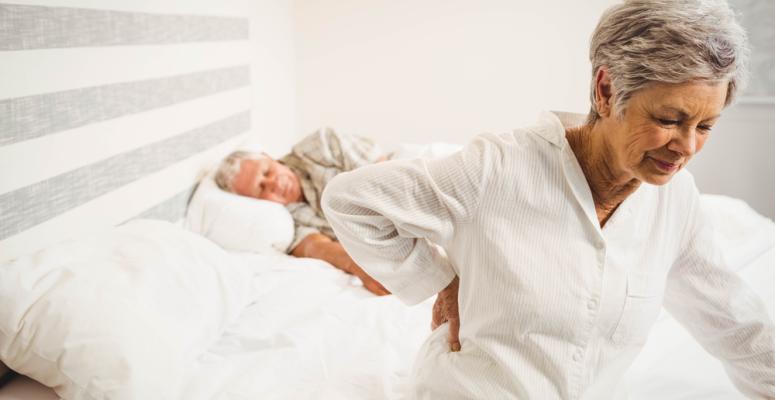
Back pain is shockingly common, with 39% of all American adults reporting some form of back pain. It gets more common with age, too; 44.3% of people over age 45 say their back hurts, and 45.6% of people over the age of 65 report pain in their back.
In this article, we’ll offer some tips that can help with back pain in old age. Keep reading for more information.
Why does aging cause back pain?
There are a few reasons why your back hurts more as you age. For one, the discs in your spine tend to wear away over time. These discs are supposed to cushion your vertebrae so that your spine doesn’t hurt as you move around, but they provide less and less cushion as they wear away. This can result in back pain.
Musculoskeletal disorders are more common in old age, too, and can be a cause of age-related back pain. Ten million people over the age of 50 have osteoporosis and 49.6% of people over 65 have arthritis. These conditions create inflammation in the musculoskeletal system and can cause significant pain, especially in the spine.
In some people, the spine even gets narrower over time. This is a condition called spinal stenosis, and it’s expected to affect over 18 million people by 2032. As the spinal cord narrows, it puts pressure on the nerves that pass through it, which can send pain signals to the brain.
Tips that can help with back pain in old age
Here are a few steps you can take to manage age-related back pain:
- Stay active — Regular exercise keeps your bones and soft tissue limber, which can help prevent pain. It also promotes blood flow, which ensures that you’ll have plenty of white blood cells fighting infection in your spine and oxygen to generate new cells as our old ones die. Even some light exercise like walking can do wonders for your back pain.
- Get plenty of rest — While exercise is crucial to back pain management, rest is just as important. Our bodies repair themselves while we sleep, giving our muscles and joints time to recover from the day. Rest is particularly important as you age, as your bones and soft tissue naturally get weaker over time.
- Watch your diet — Inflammatory foods like processed meats, refined grains, trans fats and sugars can cause swelling in your body. In your back, this swelling can put pressure on your spine, and that increases your pain. Anti-inflammatory foods, on the other hand, can reduce swelling and reduce the amount of pain you experience. Anti-inflammatory foods include berries, fatty fish, beans, nuts and seeds, among others.
- Alternate ice and heat on your back — When you apply ice to a body part, it reduces swelling by slowing your circulation and sends less blood to that area of the body. When you apply heat to a body part, it increases blood flow to that area, which sends more blood cells and oxygen to help fight infection and heal any injuries. Alternating ice and heat is effective because it sends plenty of blood to your back while reducing swelling. For best results, alternate in 20-minute intervals for two hours at a time.
- Attend physical therapy — A physical therapist can help you build strength and flexibility in your back so that it hurts less. They will also talk to you about your daily activities and coach you on how to perform your daily tasks without causing further pain to your back. Furthermore, your PT will apply manual therapy techniques to physically relieve tension in your back that’s causing you pain. Many clinics even offer aquatic therapy for people with severe back pain, which makes it easier to exercise without putting added pressure on your spine.
Alliance PTP is ready to help you find top-notch PT for back pain
At Alliance Physical Therapy Partners, we’re proudly bringing together physical therapy clinics across the country to give people access to high-quality PT services. Want to meet with a physical therapist in person? We can put you in touch with an Alliance PTP partner in your area that can help you address your age-related back pain.
Not keen on in-person PT sessions or not close to an Alliance PTP partner? That’s OK. We also offer effective and affordable virtual physical therapy through our Agile Virtual Physical Therapy platform.
Contact our team today so we can help you find the most effective physical therapy services for your injury or condition.
Get Help at a Location Near You
